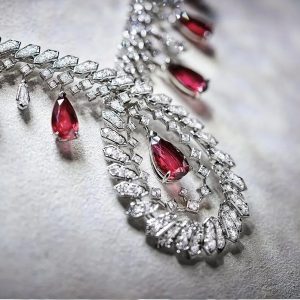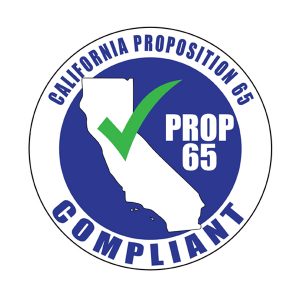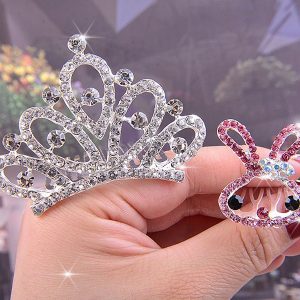Description
The exquisite jewelry embellishes the beauty of life. In this era of personality, all kinds of accessories continue to emerge. The close contact between the jewelry and the skin adds luster to you. However, if the jewelry contains toxic and harmful substances or other potential dangers, it will bring hidden dangers to your health and safety, and even threats! According to the current jewelry related laws and regulations or standards in many countries or regions in the world, there are many control factors, mainly including various toxic chemicals and mechanical and physical safety. Although these regulations or standards have the same control purpose, the specific control objects, requirements and limits vary from place to place.
ASTM F2999, the Standard Consumer Safety Specification for Adult Jewelry, is a detailed set of specifications that describe the safety specifications and testing methods for adult jewelry. This code applies only to adult jewelry, which means jewelry worn by persons over the age of 12. Jewelry worn by persons under 12 years of age applies to the ASTM F2923 Children’s Jewelry specification.
The ASTM F2999 specification covers two main types of hazards: the presence of toxic metals and mechanical hazards. This article will summarize the criteria for these two hazards. If you need to refer to the complete specification, please visit the ASTM website here.
ASTM Jewelry Testing: Mechanical Specification Abstract
Jewelry with batteries
If the battery of the jewelry is defined as a “small part” (less than 1.25 inches in any dimension), or if there is a risk of ingestion, make sure that the battery cannot be removed without the use of a common tool, such as a screwdriver.
Jewelry containing magnets
All jewelry containing harmful magnets must be properly labeled. The complete specification contains examples of such warning labels. In addition, because magnets have the potential to affect the function of pacemakers and other implantable medical devices, manufacturers should consider adding labels as appropriate.
Service content
Scope of application
Adult accessories for export to the US market
2. Technical standards
The American market.
3. Technical requirements
Total lead, total cadmium, total mercury, total arsenic, phthalates, nickel release, heavy metals, etc.
4. Applicable objects
Manufacturers, brands, exporters.
5. Test requirements
ASTM Jewelry Testing: Summary of Specification for Toxic Metals
item |
Control project | demand |
| PB | Base material: 100 mg/kg; Coating: 90 mg/kg | |
| cadmium | 75 mg/kg | |
| Extractable cadmium | Plastic parts: 75 mg/kg; Metal small parts: 200 μg | |
| Cadmium salt extract | 18 μg | |
| Nickel release | Puncture capacity: 0.2μg /cm2/week
Long-term skin contact: 0.5μg /cm2/week |
|
| 7 kinds of soluble heavy metals
(coating) |
Cadmium: 75 mg/kg, mercury: 60 mg/kg
Chromium: 60 mg/kg, arsenic: 25 mg/kg Selenium: 500 mg/kg, antimony: 60 mg/kg Barium: 1000 mg/kg |
|
| Phthalates | 8P: DEHP/ DBP/ BBP/ DINP/ DIBP/ DCHP/ DPENP/ DHEXPEach type shall not exceed 1000 mg/kg. | |
Physical itemA sharp point with a sharp edge |
Jewelry for children under 8 years old shall not contain dangerous points or dangerous edges that can be touched. | |
| widget | Accessories for children under 3 years old must not contain small parts. | |
| Hazard magnet
(Magnetic flux ≥50KG2mm² and belongs to small parts) |
(1) Under 8 years of age: after normal use and reasonably foreseeable abuse testing, it must not contain hazardous magnets or hazardous magnetic parts;
(2)8 years old and above: if hazardous magnets or hazardous magnetic parts are contained, a warning statement is required. |
|
| Release force at break | After a 15-pound tensile test, it can be disconnected without releasing any physical hazards.
Exemption: Children’s jewelry with a circumference of less than 9.4 inches |
|
| Battery requirements | (1) Before and after the abuse test, batteries belonging to small parts should not be touched without the use of any tools;
(2) For replaceable batteries should be marked: old and new batteries can not be mixed; Alkaline batteries, standard (carbon-zinc) batteries, or rechargeable (nickel-cadmium) batteries cannot be mixed and similar information; (3) For accessible non-replaceable batteries, relevant instructions or labels should be added; (4) battery-driven children’s jewelry should be designed to make it impossible to charge non-rechargeable batteries (except button batteries); (5) The battery polarity should be permanently marked in the product labeling or description. |
|
| Suction tongue nail | Shall not contain | |
Label requirement |
Age label | Add an age label |
| Other recommended warning slogans | Warning signs for piercing parts embedded in earpieces | |
Jewelry containing filled liquid |
Filling liquid requirement | (1) shall not contain substances in 16CFR 1500.231 and 16CFR 1500.14 (materials requiring special labeling);
(2) If the jewelry contains cosmetics, the cosmetics need to meet USP51&61&62; (3) If the jewelry contains other liquids, pastes, putty, gels, powders (except cosmetics), it needs to meet USP6&62.
|
Service advantage
Timeliness: RTS has a set of independently developed LIMS system, which monitors and manages the entire test process, greatly improving work efficiency and shortening the inspection cycle entrusted by enterprises.
Convenient: RTS has a perfect order platform and free on-site pick-up service, and can provide one-to-one consultation and training and one-stop product compliance service chain for enterprises.
Price: RTS in the consulting stage can be based on the product information and material situation of the enterprise comprehensive evaluation, to provide the most appropriate and the most economical quotation scheme for the enterprise, greatly reducing the test cost.
Quality: As a national high-tech enterprise, RTS has dozens of patented inventions and supporting instruments and equipment and professionals to meet the needs of different customers and different products.





